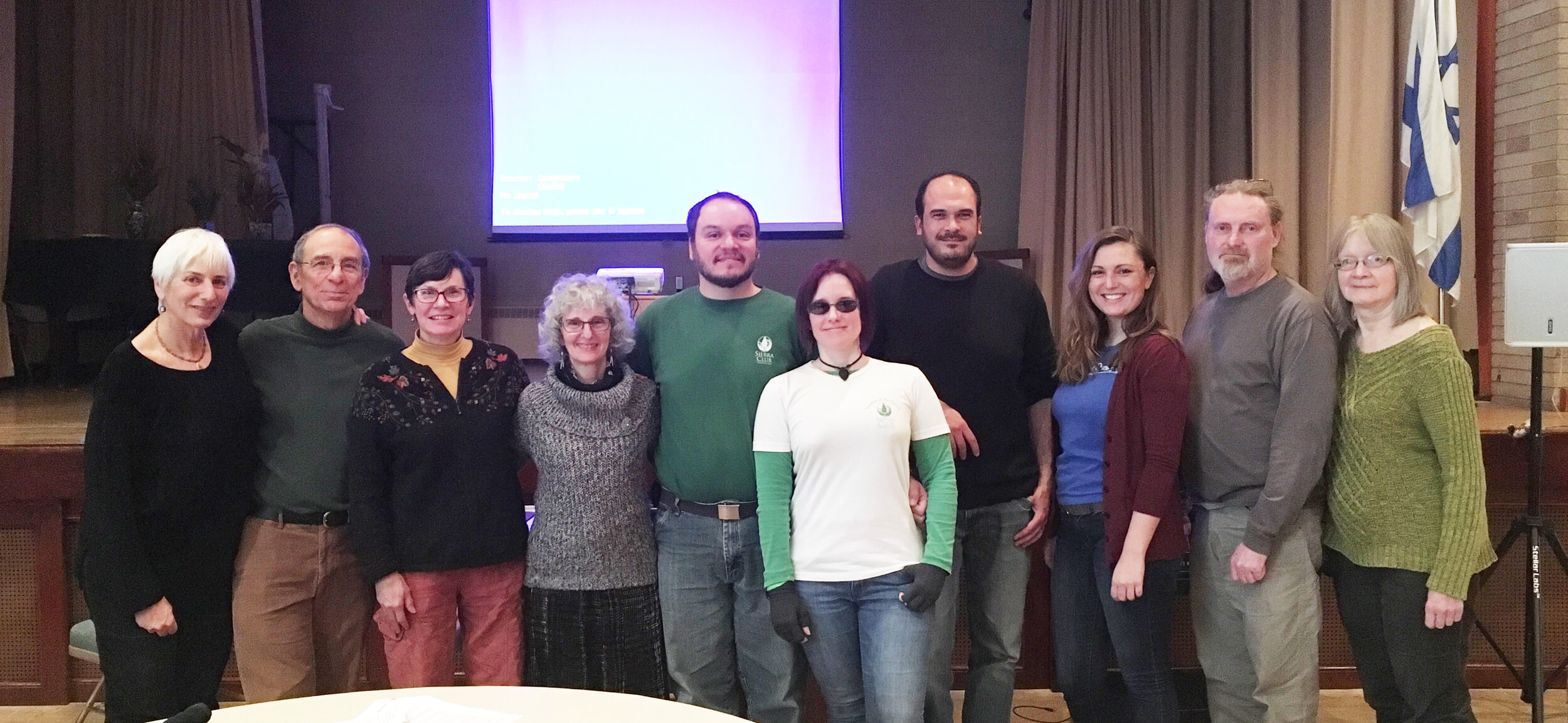It’s in Our Yard: Confronting the Reality of Climate Change
On Sunday, February 11, I had the honor of presenting at a “Climate Reality Presentation and Discussion,” held at Temple Israel in Gary, Indiana. The brunch was open to all members of the community, to learn about current issues of climate change and actions we can take.
I learned a great deal from my co-presenter, Linc Cohen, who trained in Al Gore’s Climate Reality Leadership Corps to bring education about climate change to the broad community. Did you know that the warming of the oceans is where climate change is most obvious? There are those who say that land temperatures don’t seem all that much warmer than usual. While that is inaccurate – and graphs based on actual data prove this – in comparison to the warming of the oceans, the land temperature increases have been much more moderate. In other words, the real area where global warming is in evidence is in our oceans.
As the oceans continue to warm, more water is evaporating into the sky. The air, then, is now holding increased amounts of moisture. It is this increased moisture density that is the reason for the increase in storm power and rainfall in recent years. Additionally, in the past, big hurricane activity was somewhat impeded when hitting land, because the deep ocean temperatures near the shore were cold, halting the storms. Now ocean water is warm to extensive depths, so the ocean’s power to tame the storm is reduced or not existent. This is why recent storms last longer than they did in the past.
The massive amount of rainfall from these storms has catastrophic results, as we know. My trip to Houston this summer was to help with Hurricane Harvey disaster relief. We all hear continually of the stories of lives lost, homes lost, towns lost. In Miami, it is now a normal occurrence that when tides are exceptionally high, the main streets are flooded. Cars, bikes and pedestrians alike move through water that is deeper than one’s ankles.
How do these crises affect our food sources? There are two main consequences: when land floods, and all the more so when it is flooded for lengthy periods of time, it kills the produce growing in it. Conversely, higher air temperatures cause the soil to dry out more quickly, leaving it parched and desolate, and unable to nourish food plants. As a result, many foods that we take for granted are facing extinction. Strawberries, almonds and coffee are among the many foods in this category.
Of course, there are many other food plants facing extinction as well, but for other reasons. One major contributor is monoculture – the manufacture and planting of single seed varieties. These are beloved and touted by major seed sellers and GMO manufacturers for certain of their characteristics, to the exclusion of all others. Varieties of corn, tomatoes, potatoes and so many other plants have gone by the wayside. This is one of the reasons that heirloom seeds, saving your own seeds, and seed vaults around the world, like Norway’s Svalbard Global Seed Vault, are critical. The diversity of creation ensures the survival not only of those species themselves, but of all the other creatures, including humanity, whose very lives depend on that wide spectrum of life.
One significant mitigating factor in climate change is reducing our dependence on fossil fuels, and investing in alternative energy forms. Linc’s presentation showed that the current investment in wind and solar far exceeds the projections to date. But there is much farther to go.
This is one of the reasons that growing food, native gardens, permaculture sites, and food forests is so significant. We reduce our carbon footprint, shortening the distance our food travels from ground to table. We reduce our reliance on fossil fuels when we avoid nitrogen-based chemical fertilizers, pesticides and herbicides. Doing so we simultaneously prevent additional poisons from entering our air, soil and water, compounds that prove over and again to have devastating health effects on us all, most specifically our children.
The statistics in the Climate Reality presentation were staggering. But we have alternatives, and we have choices. You can go to www.planetvision.com/actions for a comprehensive guide on what you can do in your daily life to battle climate change. You can learn more or become a teacher through the Climate Reality Project. You can plant a garden. Contact us at rabbidamsky@inthegardens.org to help you plan and plant one in your home, school, business or community.
Together we can create the Earth’s future as one with bounty and beauty that our children, grandchildren and great grandchildren will enjoy throughout many more generations.
Here’s to working together for a better future,
Rabbi Robin Damsky





